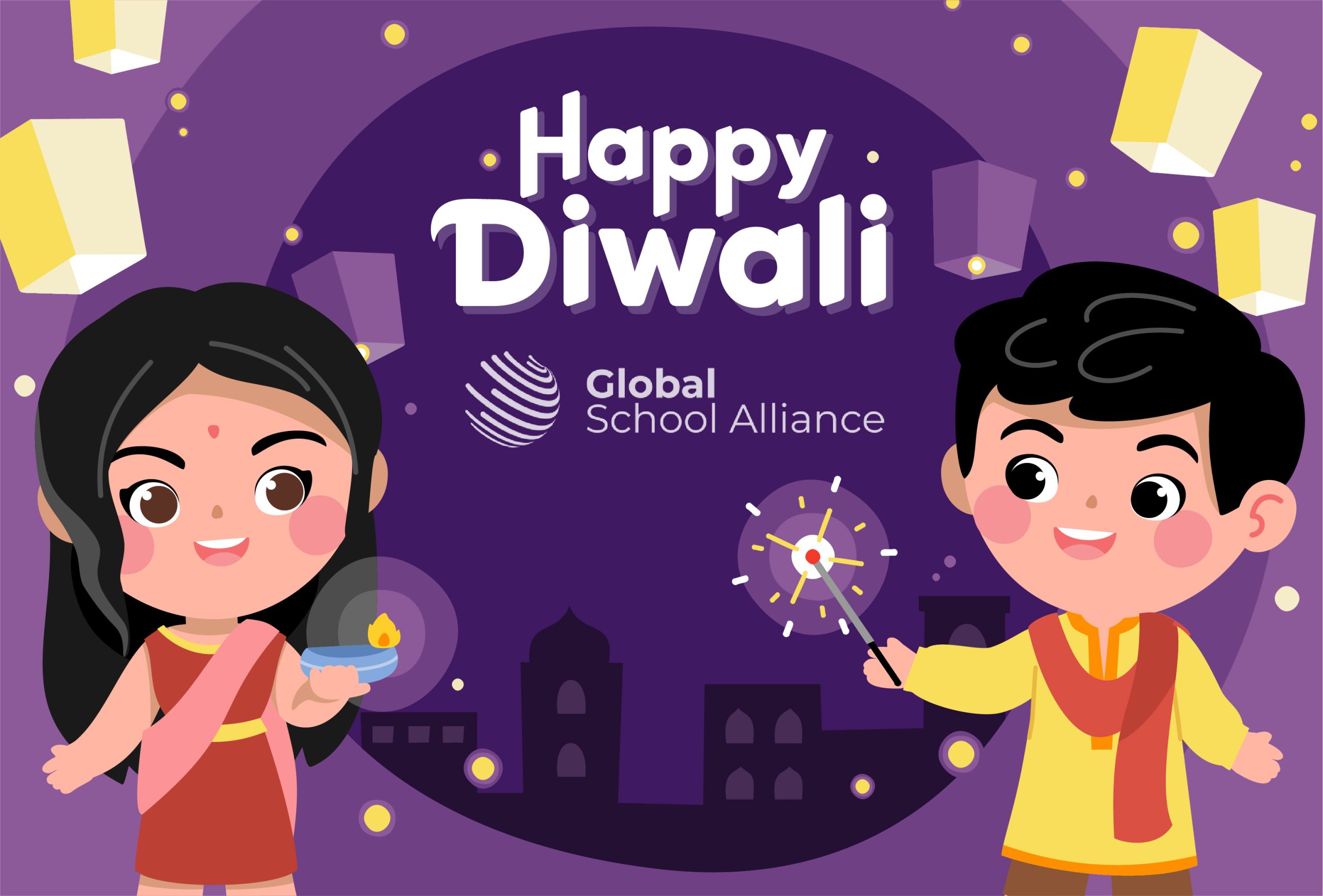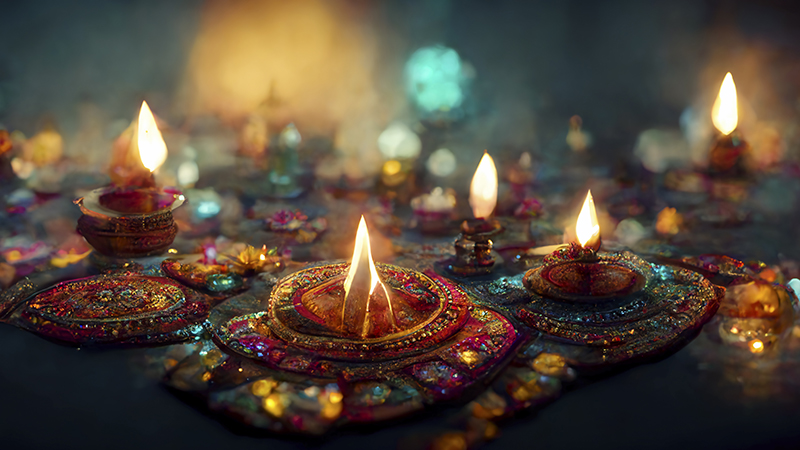What is Diwali?
Diwali, also known as Deepawali, or the Festival of Lights, symbolises the triumph of good over evil, light over darkness and new beginnings. It is India’s most important holiday and marks the start of the Hindu New Year.
Diwali means ‘row of lights’ in Sanskrit, the sacred language of Hinduism.
The festival takes place annually and lasts for five days. It always falls sometime between October and November, but the exact date varies each year as the Hindu calendar is based on the Moon.
To celebrate people typically decorate their homes, shops and other public places with oil lamps called diyas. These are left burning through the night to welcome the gods into the new year.
How can schools celebrate Diwali?
1. Teach the story of Rama and Sita
The story of Rama and Sita is an incredibly significant tale from the Hindu religion. It tells the story of the deities (gods) Rama and Sita who return to the city of Ayodhya after defeating the evil king Ravana. It tells us that good can overcome evil, and light can drive away the darkness.
2. Practice a Diwali dance
A Diwali dance workshop is a great way to express the story of Rama and Sita through dance and movement.
Resource: Diwali Dance (Twinkl)
3. Create a lantern
Lanterns are an important part of Hindu tradition, symbolising the light in the dark night of Kaliyuga. They are meant to protect against bad spirits and negative energies and symbolise kindness and purity.
Resource: Diwali Lantern (BBC/CBeebies)
4. Classroom display

What better way to encourage students to learn about the festival than an eye-catching classroom display? With student contributions, the whole class can learn about the important traditions.
Resource: Diwali Classroom Display (Twinkl)
5. Taste traditional sweet foods
Food plays a central role in the festival. On the fourth day of Diwali, which coincides with the Hindu New Year, people bring sweet foods to friends and family to signify good wishes for the coming year.
These rituals and foods may vary depending on the region – for example, you might have petha candy in Northern India or Pakistan, or deep-fried shankarpali cookies in western India.




